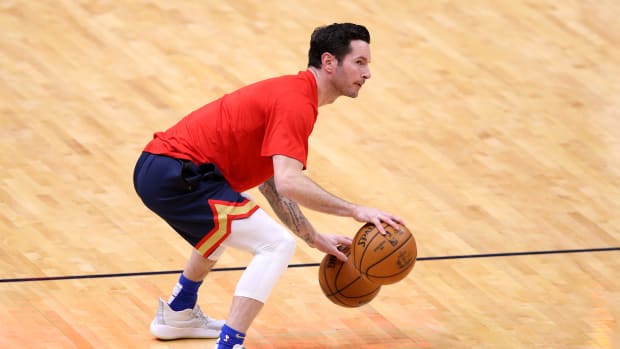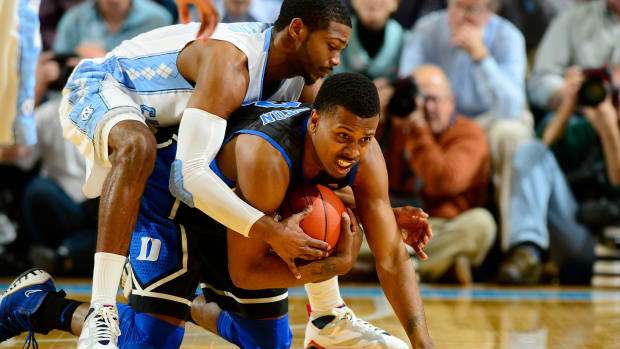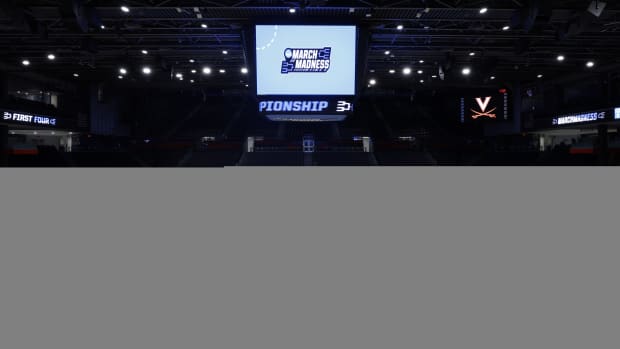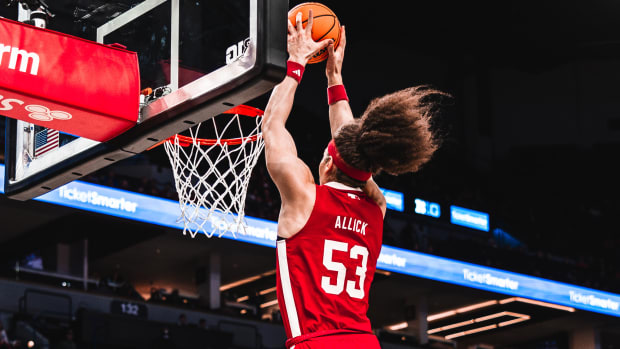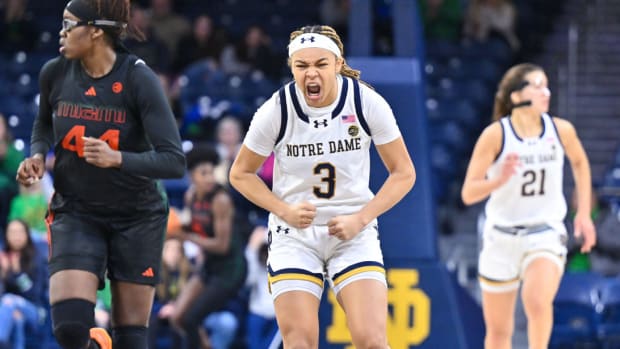NCAA's Shameful Tournament Disparities Take the Spotlight From Where It Belongs
One of the early joys of the 2021 NCAA women’s basketball tournament was that there was no single dominant story line.
Yes, there was plenty of debate about whether to pick Stanford over UConn, but it was hard to do that without considering the possibility of a tournament final that would echo one of the best games of the regular season, UConn vs. South Carolina—and did you really want to count out NC State, or perennial powerhouse Baylor, or national scoring leader Maryland?
This season has boasted a remarkable distribution of talent. Look no further than the semifinalists for the Naismith Award, given to the nation’s top player: 11 players from 11 different schools, eight of which had been ranked in the top 10 this year by the Associated Press, three of which had been No. 1. (This is the first time that all play for different schools since the award began announcing semifinalists in 2013.) With such a breadth of talent, the bracket feels open to anything, and the same is true of the stories on the table—there’s so much to talk about that there’s no pressure to focus on just one thing.
Which makes it all the more shameful that the NCAA installed a single dominant story line of its own on Thursday: the strikingly disparate conditions for the women’s bubble in San Antonio versus the men’s in Indianapolis.
As players and coaches got set up in San Antonio, they shared clips on social media of their accommodations, particularly focused on the weight room. The NCAA had posted a time-lapse video of all that it took to set up the various equipment in the men’s weight room—whereas the women had a single dumbbell rack and some yoga mats alongside a single stationary bike. The NCAA released a statement that night acknowledging that the facilities were different and saying that the issue had been a lack of space. Oregon forward Sedona Prince responded by filming herself walking around the weight room, showing that there was plenty of space, but no equipment to fill it.
There were also differences in the food (a full buffet for the men versus prepackaged meals for the women) and in the gift bags (enough to cover an entire bed versus enough to fit in a drawstring bag). It all underscored the same frustrating point—not just that the organizers had not believed the women deserved the same accommodations but also that they had not thought it would matter.
On Thursday morning, NCAA vice president of women’s basketball Lynn Holzman had shared how excited the tournament was to move on from establishing coronavirus protocol to actually playing basketball. “We are absolutely thrilled,” she said. “Just the idea that we are now, even this morning, starting to hear basketball bouncing and balls going through hoops.”
By Friday morning, however, the focus was not on basketball, but instead on the failures of the NCAA.
“We fell short this year on what we’ve been doing to prepare,” said Holzman, noting that after a call with coaches and team administrators late on Thursday, they had committed to making changes to the weight room by Saturday.
Holzman and Dan Gavitt, senior president of basketball for the NCAA, both apologized for the situation. But they failed to offer a coherent explanation for just how any of this happened in the first place.
“As I thought about it overnight, and lost sleep over this, I think that some of it may be a result of working remotely,” Gavitt said of the difference between the products from the men’s basketball team that works under him and from the women’s basketball one. “Our staffs have not been together since last summer. We have technology that helps to mitigate that, for sure, but we can do better. We have to do better. And I need to make sure that we’re making that a priority.”
It’s true that it’s difficult to organize these tournaments even under the best of circumstances—let alone first-of-their-kind editions in COVID-19 “bubbles” that had to be organized by employees working from home. But it seems far less true that one of the problems in this scenario should be a complete failure to check if the two tournaments can offer equal resources.
Gavitt and Holzman said that they had not been aware of the extent of the gap until athletes and coaches began posting to social media yesterday. (Although teams had arrived in San Antonio earlier in the week, they quarantined for a few days before being able to leave their hotel rooms and begin practicing on Thursday, when the discrepancy became clear.) The NCAA is currently making changes both to the weight room and to the food options, and there will be another call with coaches and team administrators after the second round of the tournament to solicit additional feedback on the experience and make any necessary changes.
“It’s our responsibility to give them a great championship experience and one they can be proud of,” said Holzman—herself a former college basketball player from Kansas State in the ’90s. “It’s disappointing. It is, I mean that. I don’t even have the words to describe how painful it is personally.”
It is, of course, a positive sign that changes are being administered to make the situation more equitable. But it’s damning that these changes are needed at all and that the athletes themselves had to speak up publicly to get them. It’s extra maddening when you consider how ubiquitous these discrepancies were in the first place—not only with serious performance factors, like the weight room, but also comparatively small things, like a 500-piece puzzle for the men versus a 150-piece for the women. (Holzman said the swag bags had “minor differences” tied to tournament location, such as the difference between getting a blanket and an umbrella, which seems … questionably accurate when the contents of the bags are laid out side by side.) These oversights might seem fairly unimportant when each is considered on its own. Together, however, they show a pervasive lack of respect.
This is a huge disservice to the athletes. But it’s also a shame for the fans, and for everyone watching, and the basketball stories that might have otherwise been heard in these days leading up to the first round. In a tournament so rich with talent, with so many new story lines, it’s a shame that the first one grabbing headlines is one that has been dragging on for years—one about the failure to simply treat these women equally.
SI’s tournament newsletter analyzes everything you need to know about the Big Dance: what just happened and what’s happening next. Sign up for Morning Madness here.
